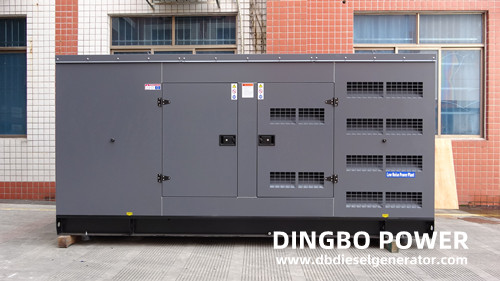dingbo@dieselgeneratortech.com
+86 134 8102 4441

- Home
- Products
- About Us
- Service
- News
- Technical Support
- Contact Us
dingbo@dieselgeneratortech.com
+86 134 8102 4441
Sep. 21, 2023
According to the regulations of the power system, the main safety protection and requirements for the abnormal operation and possible faults of synchronous generators are as follows:
1. Overload and short circuit protection of generators
The protection of generator should use a circuit breaker that can simultaneously disconnect all insulation poles for overload and short circuit protection, and its overload protection should be compatible with the thermal capacity of generator. And the following requirements should be met:
(1) When the overload is between 10% and 50%, the circuit breaker with a delay of less than 2mn should break. It is recommended to set it at 125% to 135% of the rated current of generator, with a delay of 15 to 30 seconds for the circuit breaker to break.
(2) If the overload (current) is greater than 50% but less than the steady-state short-circuit current of generator, the circuit breaker should break after a short delay required by the system selective protection. It is recommended to set the short delay release of the circuit breaker according to the following regulations: the starting value is 200%~250% of the rated current of generator, and the delay time is: the maximum DC time is 0.2s, and the maximum AC time is 0.6s.

(3) In cases where three or more generators may be connected in parallel, an instantaneous release should also be installed and set to momentarily open the circuit breaker at a slightly higher short-circuit current than the maximum short-circuit current of the protected generator.
(4) Generators with a single unit capacity of less than 50kW (or kVA) and not operating in parallel can be equipped with a multi pole linkage switch and a fuse for protection on each insulated pole.
(5) Generators with a capacity of 1500kVA or above should be equipped with a suitable protective device or system to deexcite the generator and open its circuit breaker in the event of a short circuit in the power supply cable inside the generator or between the generator and its circuit breaker.
The overload protection of diesel generator sets is mainly achieved by the automatic grading unloading device and the overcurrent release in the automatic air circuit breaker. The external short-circuit protection of diesel generator sets is mainly achieved by the overcurrent release in the automatic air circuit breaker.
2. Undervoltage protection of generators
Generators operating in parallel should be equipped with undervoltage protection and meet the following requirements:
(1) When the motor is not generating electricity and the circuit breaker is closed, it should act instantaneously.
(2) When the voltage drops to 70%~5% of the rated voltage, it should act after a delay required by the system's selective protection. The undervoltage protection of diesel generator sets is mainly achieved by the voltage loss release in the automatic air circuit breaker.
3. Reverse power protection of generators
AC generators operating in parallel should be equipped with reverse power protection with a delay of 3 to 10 seconds. The reverse power (or reverse current) value of generators operating in parallel can be adjusted according to the type of prime mover as follows:
① The prime mover is a diesel engine: 8% to 15% of the rated power (current) of the generator.
② The prime mover is a turbine: 2% to 6% of the rated power (current) of the generator.
When the power supply voltage drops to 50% of the rated voltage, the reverse power or reverse current protection should not fail, but its operating value can be changed. The reverse power protection of diesel generator sets is achieved by a reverse power relay.
4. Automatic unload(without load)
Appropriate unloading devices or other equivalent measures should be installed to automatically unload non essential loads and equipment that ensures living conditions. If necessary, secondary important equipment can also be unloaded to ensure that the connected generator does not experience continuous overload. According to the overload capacity of the generator, this unloading can be carried out in one or multiple stages. In this case, non essential loads should be removed first.
Any malfunction of a diesel generator set may have adverse consequences, especially the consequences caused by short circuit faults are serious. When a three-phase short circuit occurs, the short-circuit current of the generator can reach more than 10 times the rated current, and the heat and mechanical force generated by this current can be more than 100 times higher than the normal value, causing huge damage to the generator. If not cut off in a timely manner, it may lead to the disconnection of parallel running generators, causing the entire power system to lose power, and even causing a fire, endangering the safety of the factory and human life. Therefore, in the design and operation of diesel generator sets, practical and effective measures should be taken to avoid abnormal operating conditions and short circuit faults as much as possible. One of the most effective methods is to install protective devices in the diesel generator set to automatically and quickly remove faults.
Quicklink
Mob.: +86 134 8102 4441
Tel.: +86 771 5805 269
Fax: +86 771 5805 259
E-mail: dingbo@dieselgeneratortech.com
WhatsApp: +86 134 8102 4441
Add.: No. 10 Kechuang Road, High tech Zone, Nanning, Guangxi, China